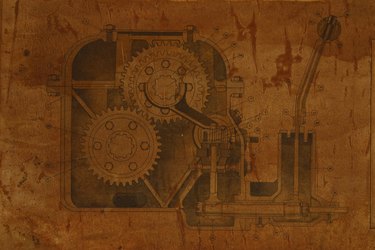
Modern artists sometimes create works that are intended for mass production. Although more than one copy is created, the artist limits the number of copies. Called prints, these limited editions hold some value, although considerably less than an original. The etchings that produce the prints are unique and therefore valuable. Restrikes are later impressions that are not authorized by the artist or his heirs. Fortunately, there are a few ways to determine the difference between an original and a restrike.
The Etching Process
Video of the Day
An etching made using a metal plate was a method preferred by artists such as Rembrandt, according to the Fine Art Advocacy. The artist covers the metal with resin or a substance of similar consistency. Once the resin cools, the artist uses an etching tool to carve a design into the resin. Next, an acid is applied and allowed to eat away the metal. Shading and tinting are obtained by allowing the acid to linger on certain areas and not others. Then the artist applies liberal amounts of ink to the plate. By pressing the plate onto a canvas or cloth, the artist can create several copies of the design. A press is the fastest way to make such a print.
Video of the Day
The Difference
Original etchings are made during the etching process and as a part of related print sessions. From this, the artist creates his limited supply, which is often numbered, before storing the etching plate. Many years later, usually upon the artist's death, the etching is used to create more prints. However, these have no specific quantity limit. The number of prints made is endless. The etching may become worn after many prints but is repaired and still used. The prints made in a print run that is unrelated to the original is called a restrike.
Quality
Restrikes are of much lower quality than original etchings, which are crisp with clearly defined details. The picture is just as the artist intended. The repetitive printing associated with restrikes causes damage to the metal plate and resin coating. Prints from such plates are flawed and show traits like blurred lines, missing and unintelligible words, and incomplete pictures.
Value
Of course, original etchings have the highest value. The etching plates are also highly valuable, but restrikes are cheap enough to allow anyone the opportunity to own a print by a favorite artist.